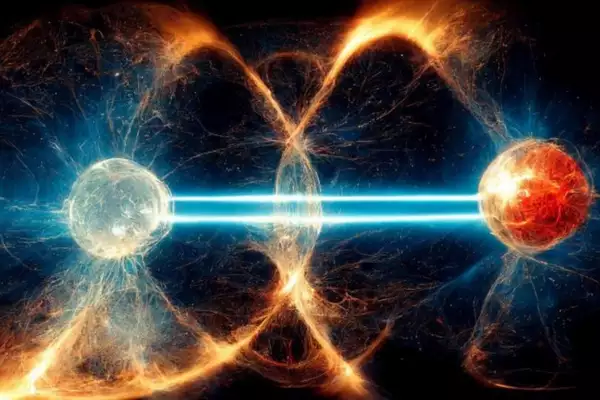A study recently published has shown that it is impossible to establish a universal standard for measuring and quantifying quantum nonlocality.
Key Findings of the Study
- The research highlights that quantum nonlocality varies depending on the type of correlation involved, resulting in an infinite number of unique points on the correlation boundary.
- Each nonlocal resource is distinct, capable of performing specific tasks that others cannot.
- This finding is vital for applications in secure communication, random number certification, and cryptographic key generation.
- The study emphasizes the complexity of quantum nonlocality and its significance in developing technologies that exploit these unique quantum properties.
About Quantum Nonlocality:
- Quantum nonlocality describes an unusual, instantaneous connection between distant objects, challenging the classical concept of local realism, which asserts that faster-than-light communication is impossible.
- This phenomenon is essential to advanced technologies such as secure communication, random number generation, and cryptographic key creation.
- Example:
- Imagine two particles that are created together and then separate, moving to opposite ends of the universe.
- Classical physics would suggest that any interaction with one particle would take time to affect the other.
- However, quantum nonlocality implies that these particles remain instantaneously connected, influencing each other regardless of distance.
About Bell’s Theorem (1964)
- In 1964, physicist John Stewart Bell introduced a theorem that challenged the classical idea of local realism in quantum systems.
- Classical physics holds that objects have definite properties independent of observation and are only influenced by their immediate surroundings.
- Bell’s Theorem demonstrated that in quantum systems involving multiple, distant parts, correlations exist that cannot be explained by local realism.
- Bell’s theorem has been validated through numerous experiments, reinforcing the concept of quantum nonlocality.
Ref: Source
| UPSC IAS Preparation Resources | |
| Current Affairs Analysis | Topperspedia |
| GS Shots | Simply Explained |
| Daily Flash Cards | Daily Quiz |
Frequently Asked Question:
What is quantum nonlocality?
Quantum nonlocality describes the instantaneous connection between distant particles, defying classical physics.
How does quantum nonlocality challenge local realism?
Quantum nonlocality contradicts local realism by showing that distant particles can influence each other instantly.
What is Bell’s Theorem?
Bell’s Theorem, introduced by John Bell in 1964, shows that quantum systems can exhibit correlations that cannot be explained by classical local realism.
How has Bell’s Theorem been experimentally validated?
Numerous experiments have confirmed Bell’s Theorem, reinforcing the reality of quantum nonlocality.
Can quantum nonlocality allow faster-than-light communication?
No, quantum nonlocality does not enable faster-than-light communication, even though it involves instant correlations.



